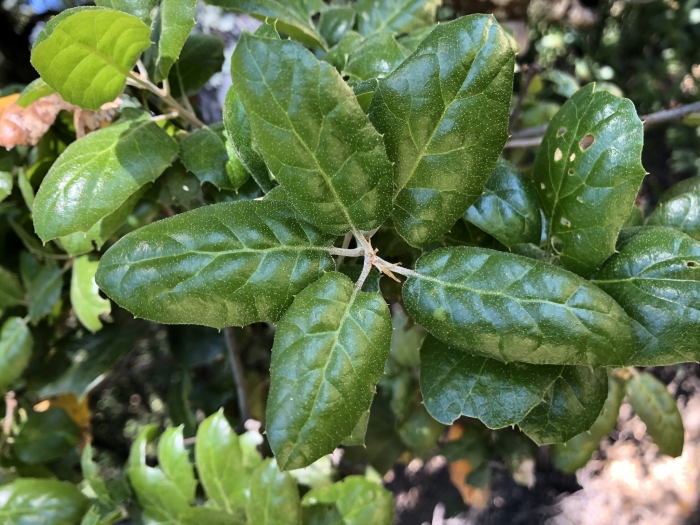Coast Live Oak
(Quercus agrifolia)
Coast Live Oak (Quercus agrifolia)
/
/

Al Kordesch
Public Domain
Image By:
Al Kordesch
Recorded By:
Copyright:
Public Domain
Copyright Notice:
Photo by: Al Kordesch | License Type: Public Domain | License URL: http://creativecommons.org/publicdomain/zero/1.0/ | Rights Holder: Al Kordesch | Publisher: iNaturalist | Date Created: 2021-04-20T13:44:45-07:00 |



















































































Estimated Native Range
Summary
Quercus agrifolia, commonly known as Coast Live Oak or California Live Oak, is an evergreen tree or large shrub native to the chaparral and woodlands of Central and Southern California, as well as Northwestern Mexico. It thrives on well-drained soils in coastal hills and plains, often near year-round or perennial streams, particularly in the drier southern part of its range. Coast Live Oak typically grows to a height of 20-70 feet (6-21 meters) with a canopy width of 20-70 feet (6-21 meters). The tree’s form is variable, ranging from shrubby in youth or harsh conditions to a stately, broad-crowned mature tree. Its dark green, holly-like leaves and acorns are characteristic features. The tree is valued for its dense canopy and year-round foliage.
Coast Live Oak is appreciated for its aesthetic appeal, providing shade and structure in western US landscapes. It contributes to garden health by producing leaf litter mulch, enhancing soil moisture through hydraulic lift, and facilitating the spread of beneficial mycorrhizal fungi. It is a keystone species for wildlife, supporting numerous moth and butterfly larvae and a variety of birds. Cultivation requires careful consideration; it prefers full sun and tolerates drought once established, requiring little to no summer irrigation to avoid soil-borne diseases. It is sensitive to changes in soil grade and drainage, especially near the root crown. Suitable for urban planting, large gardens, and naturalized areas, it requires well-drained soils and can adapt to different soil types, provided the drainage is adequate.CC BY-SA 4.0
Coast Live Oak is appreciated for its aesthetic appeal, providing shade and structure in western US landscapes. It contributes to garden health by producing leaf litter mulch, enhancing soil moisture through hydraulic lift, and facilitating the spread of beneficial mycorrhizal fungi. It is a keystone species for wildlife, supporting numerous moth and butterfly larvae and a variety of birds. Cultivation requires careful consideration; it prefers full sun and tolerates drought once established, requiring little to no summer irrigation to avoid soil-borne diseases. It is sensitive to changes in soil grade and drainage, especially near the root crown. Suitable for urban planting, large gardens, and naturalized areas, it requires well-drained soils and can adapt to different soil types, provided the drainage is adequate.CC BY-SA 4.0
Plant Description
- Plant Type: Trees
- Height: 30-70 feet
- Width: 20-40 feet
- Growth Rate: Moderate
- Flower Color: N/A
- Flowering Season: Spring
- Leaf Retention: Evergreen
Growth Requirements
- Sun: Full Sun, Part Shade
- Water: Medium
- Drainage: Fast, Medium
Common Uses
Bee Garden, Bird Garden, Butterfly Garden, Drought Tolerant, Erosion Control, Fire Resistant, Low Maintenance, Rabbit Resistant, Street Planting
Natural Habitat
Chaparral and woodlands of Central and Southern California, often near streams, with a broad-crowned mature form, valued for shade, wildlife support, and landscape aesthetics
Other Names
Common Names: California Live Oak , California Coast Live Oak , Kariforunia-Raibu-Oku
Scientific Names: Quercus agrifolia , Quercus agrifolia var. agrifolia , Quercus agrifolia var. oxyadenia , Quercus agrifolia var. frutescens , Quercus oxyadenia , Quercus pricei , Quercus acroglandis , Quercus acutiglandis
GBIF Accepted Name: Quercus agrifolia Née